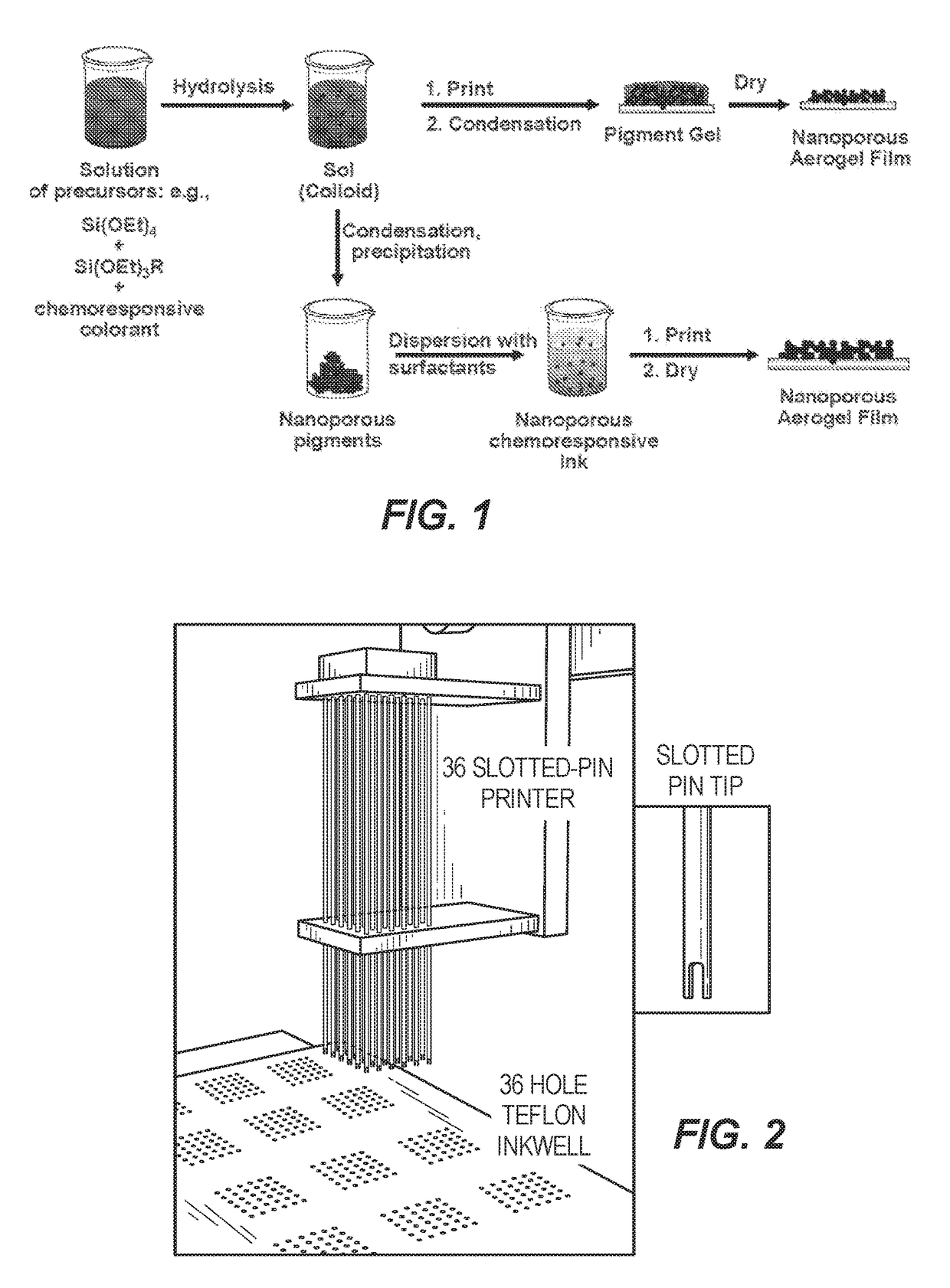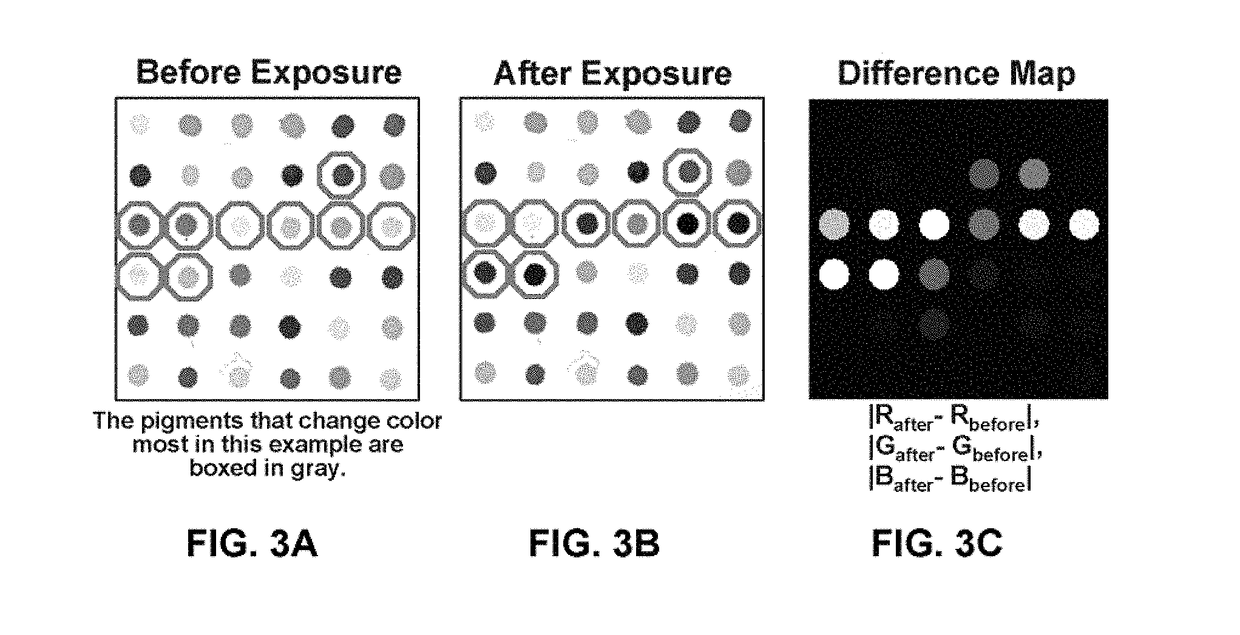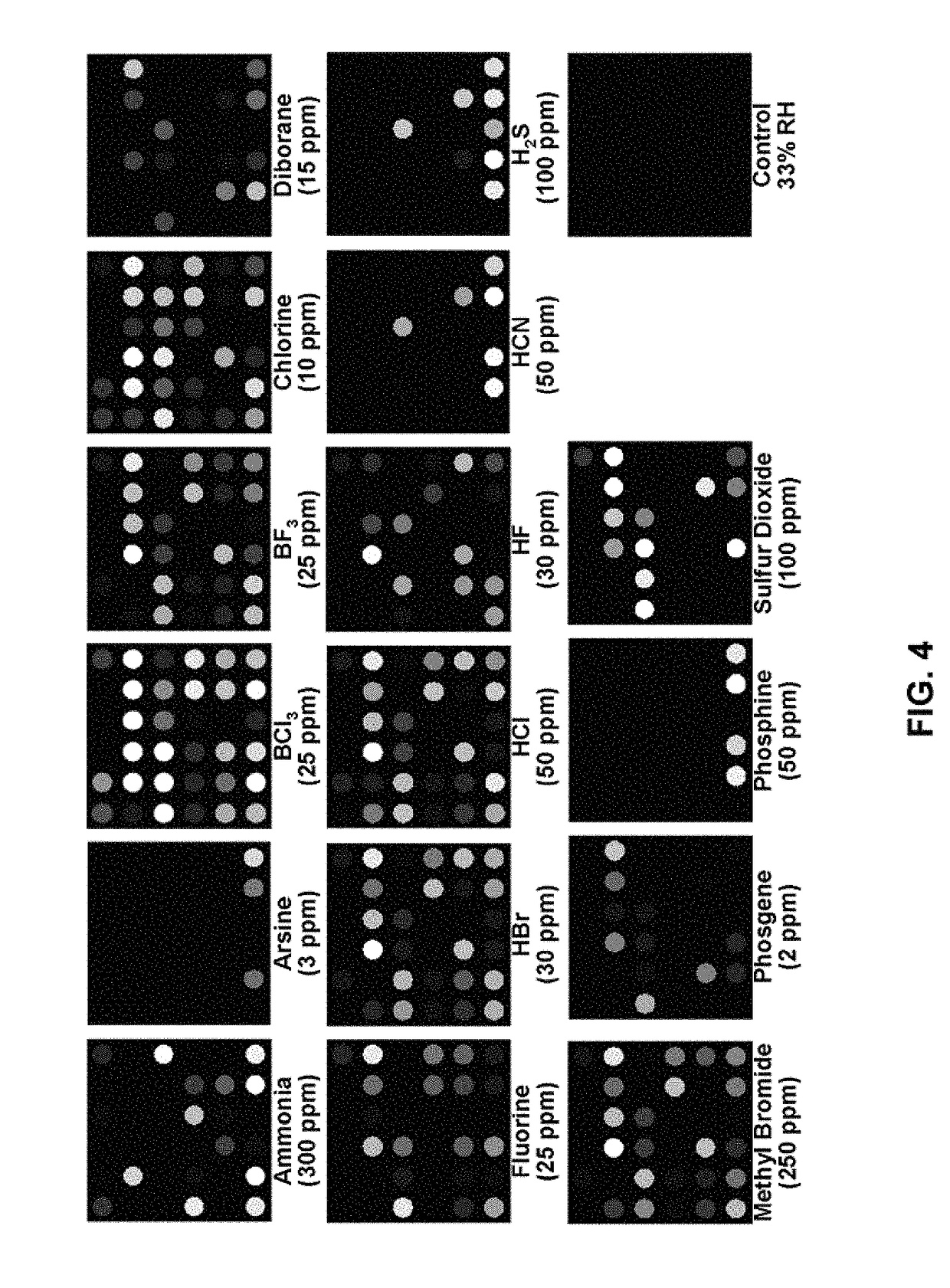Colorimetric sensor arrays based on nanoporous pigments
a colorimetric sensor and nanoporous pigment technology, applied in the field of colorimetric sensor arrays based on nanoporous pigments, can solve the problems of limited shelf life, nonporous pigments have not provided sufficient contact between the analyte and the chromophores of the pigment, and nonporous films have not provided sufficient contact between the dye in the film and the analyte in the sampl
- Summary
- Abstract
- Description
- Claims
- Application Information
AI Technical Summary
Benefits of technology
Problems solved by technology
Method used
Image
Examples
example 1
of a Nanoporous Pigment Colorimetric Array for Detection, Identification and Quantification of VOCs and TICs
[0099]A colorimetric array for the detection and identification of Volatile Organic Chemicals (VOCs) and Toxic Industrial Chemicals (TICs) was manufactured using a nanoporous material precursor and chemically responsive colorants. The nanoporous material precursor in this example was an organically modified silica (ORGAMOSIL) sol-gel solution that included 5 to 50% by volume alkoxysilanes, 5 to 20% by volume water, 1 to 80% by volume solvents, 0.001 to 0.1 M hydrochloric acid as a condensation catalyst, and 0.01 to 2% by weight surfactant. The stirred formulation was added to each of the colorants in Table 1, and the resulting mixtures were loaded into a Teflon block containing individual cylindrical wells (⅜″ deep) for each mixture.
[0100]A floating slotted dip-pin printer capable of delivering approximately 100 mL was used to print the liquids onto the surface of a hydrophobi...
example 2
, Identification and Quantification of TICs
[0102]The prepared arrays of Example 1 were cut to size and placed in puncturable, sealed polyacrylic cartridges. Premixed certified gases of 16 individual TICs were diluted using digital mass flow controllers to their immediately dangerous to life or health (IDLH) concentration. For each array, the resulting gas stream was contacted with the array in its cartridge. The image of each array was acquired using a flatbed scanner (V200; EPSON, Long Beach, Calif.) before and during exposure to the TICs. Rapid equilibration occurred, and images for analysis were acquired after two minutes exposure. Upon exposure to the analyte, the arrays underwent reversible reactions that resulted in well defined color changes. The RGB values were obtained in a difference map by subtracting the before image from the after image. To eliminate the possibility of subtraction artifacts caused by acquisitions near the spot edge, only the spot centers were included i...
example 3
ric Array for Detection and Identification of Carbohydrates
[0106]Tetramethylorthosilicate (TMOS), methyltrimethoxysilane (MTMS), methanol, and nano-pure water were combined in the molar ratio of 1:1:11:5. The mixture was stirred for 2 hours at room temperature. The stirred formulation was added to the chemoresponsive colorants listed in Table 2, and the mixtures were loaded into a block containing individual cylindrical wells having a depth of ⅜ inch for each mixture. A floating slotted dip-pin printer capable of delivering approximately 100 mL was used to print the liquids onto the surface of a nitrocellulose acetate hydrophilic membrane (MILLIPORE, Cat No. SSWP14250, 3.0 μm). The slotted dip-pin array was dipped into the inkwell with the formulations filled in the corresponding inkwell holes. The pin array was then lifted and pressed on a suitable substrate, yielding a printed array. Once printed, the arrays were cured at room temperature for 24 hours and then at 65° C. for 24 hou...
PUM
 Login to View More
Login to View More Abstract
Description
Claims
Application Information
 Login to View More
Login to View More - R&D
- Intellectual Property
- Life Sciences
- Materials
- Tech Scout
- Unparalleled Data Quality
- Higher Quality Content
- 60% Fewer Hallucinations
Browse by: Latest US Patents, China's latest patents, Technical Efficacy Thesaurus, Application Domain, Technology Topic, Popular Technical Reports.
© 2025 PatSnap. All rights reserved.Legal|Privacy policy|Modern Slavery Act Transparency Statement|Sitemap|About US| Contact US: help@patsnap.com



